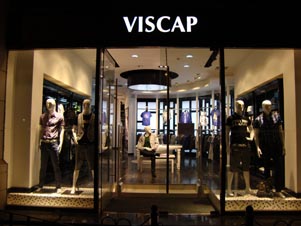
In order to deal with the industry's oversupply crisis, fast fashion brands once again take the lead in the transition. In addition to cooperating with designers, fast fashion brands such as Uniqlo, ZARA and H&M, in addition to accelerating the expansion of the main brand, have also launched a multi-brand strategy to move into a more segmented young market or a lighter luxury market.
Taking H&M as an example, after Monki entered the mainland market and launched a COS brand franchise store, H&M launched the Other Stories, which will be higher than H&M but lower than COS. It is reported that, unlike H&M's original brand style, "&Other Stories" will focus on the white-collar class that focuses more on quality of life, positioning itself on light luxury goods, while Monki's style is more magical and rebellious and focuses on younger consumers.
Current guests
Independent commentator of the footwear industry, retail industry information and e-commerce observer Ma Gang
Great Wall ** clothing industry researcher Chu Wenyu
Moderator: How do you view the development prospects of the apparel industry in 2013?
Chu Wenyu: In 2013, the entire terminal consumption will further recover slowly. From the data of November last year, there has been a clear rebound, but the December data is relatively weak. I think that the inventory problem in the apparel industry will continue to exist in 2013 and will continue to go into inventory. Fast fashion brands are relatively small in terms of inventory pressure, but there are also some problems that will continue to be adjusted in 2013.
Moderator: How do you evaluate the multi-brand development strategy that foreign fast fashion brands have pioneered?
Chu Wenyu: The multi-brand strategy has certain advantages, but the operation of a brand is not a simple matter. It takes at least 3 years to 5 years from product launch to launch to consumer acceptance. Moreover, it is necessary for enterprises to have strong forces. Not all companies have such strength and commitment.
At present, the domestic fast fashion brands' actions in multi-brands are not obvious. At most, they are launching a sub-series of a brand. In my opinion, at this stage, we should not blindly follow the strategy of multi-branding, and we must work hard on the basic capabilities of the supply chain. Ma Gang: In recent years, consumer trends have changed rapidly. With the entry of foreign fast fashion brands, ordinary people have changed from the past consumption habits to fast fashion. Because of the special fashion of fast fashion, it can be fashion and cheap, so it will quickly be favored by some young consumers. However, after several years of development, more than 100 stores have entered China’s fast fashion brands. After the channel is saturated, how can the market expand? On the basis of the original expansion and extension, multi-brand is a good attempt and can produce a synergistic effect.
Lightweight luxury transformation will face multiple challenges
Moderator: How do you see the fast fashion brand's multi-brand strategy to test water in the luxury sector? Will consumers recognize it?
Chu Wenyu: From the perspective of international experience, it is easier for a brand to extend from the high end to the low end, but it is difficult to go from the low end to the high end. After all, they face different markets, different consumer groups, and different operations. Consumer objects are also different. The transformation of fast fashion brands will also face these problems, which may cause people to distrust the brand. Ultimately, the success of the transformation will depend on the company's ability to operate and whether it can seize some special elements.
Ma Gang: This segment is already on the market. Fast fashion brands enter China through light luxury. It can use existing channels, management, design advantages, etc. to explore. However, in the long run, consumer acceptance and demand are still to be tested, and the more high-end positioning, the greater the initial investment in promotion, the longer the return period.
After all, fast fashion brands have not entered China long enough to understand Chinese consumers. Last year, some fast fashion brands were repeatedly trapped in the environmental crisis and quality issues. Their indifference to the perceptions of Chinese consumers will bring about a certain blow to consumer trust, and they will also face more stringent supervision by the regulatory authorities.
Ladies Chiffon Blouses
Weihai Yimao Garment Co,. Ltd. , https://www.cwhyimao.com
